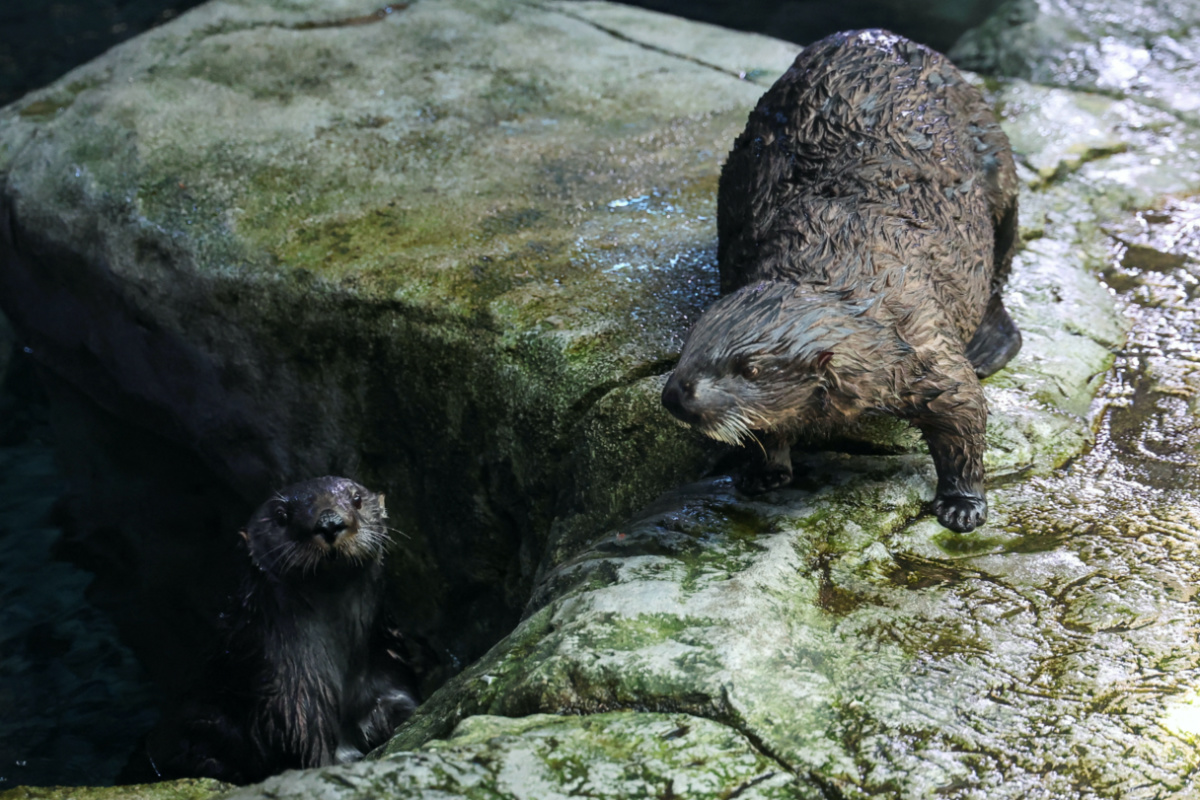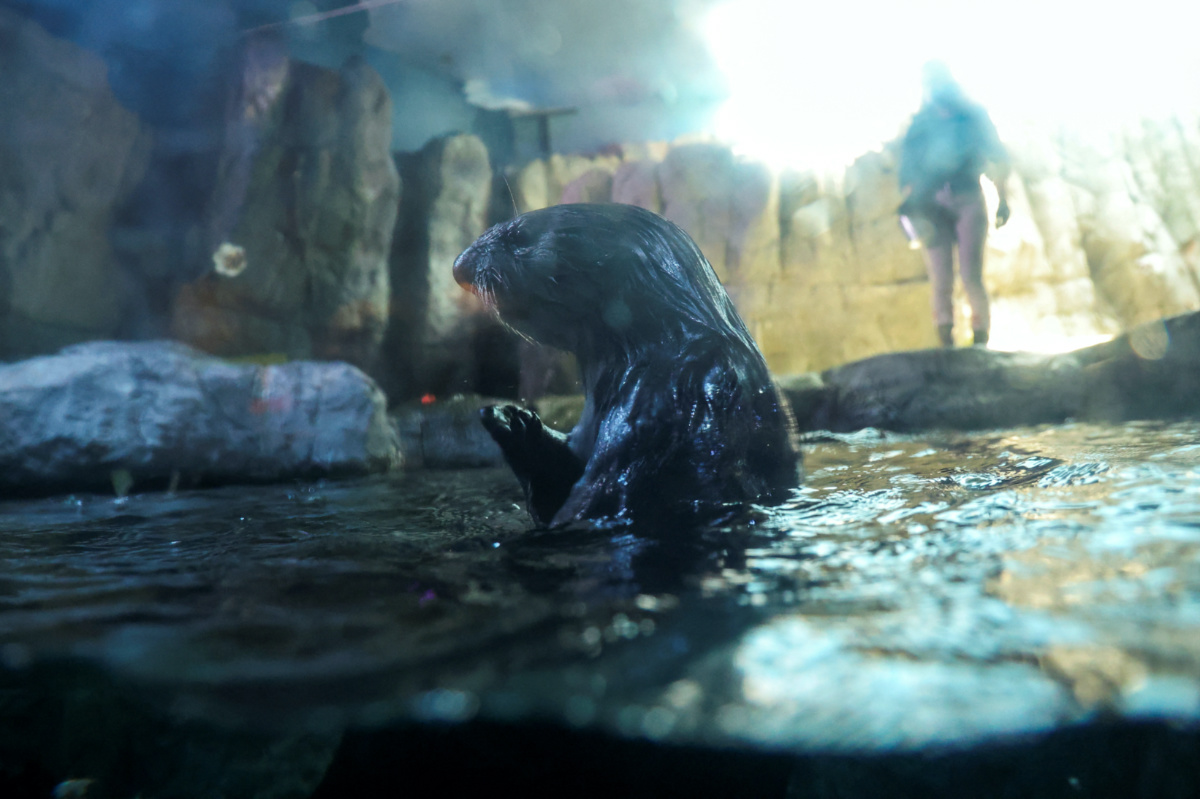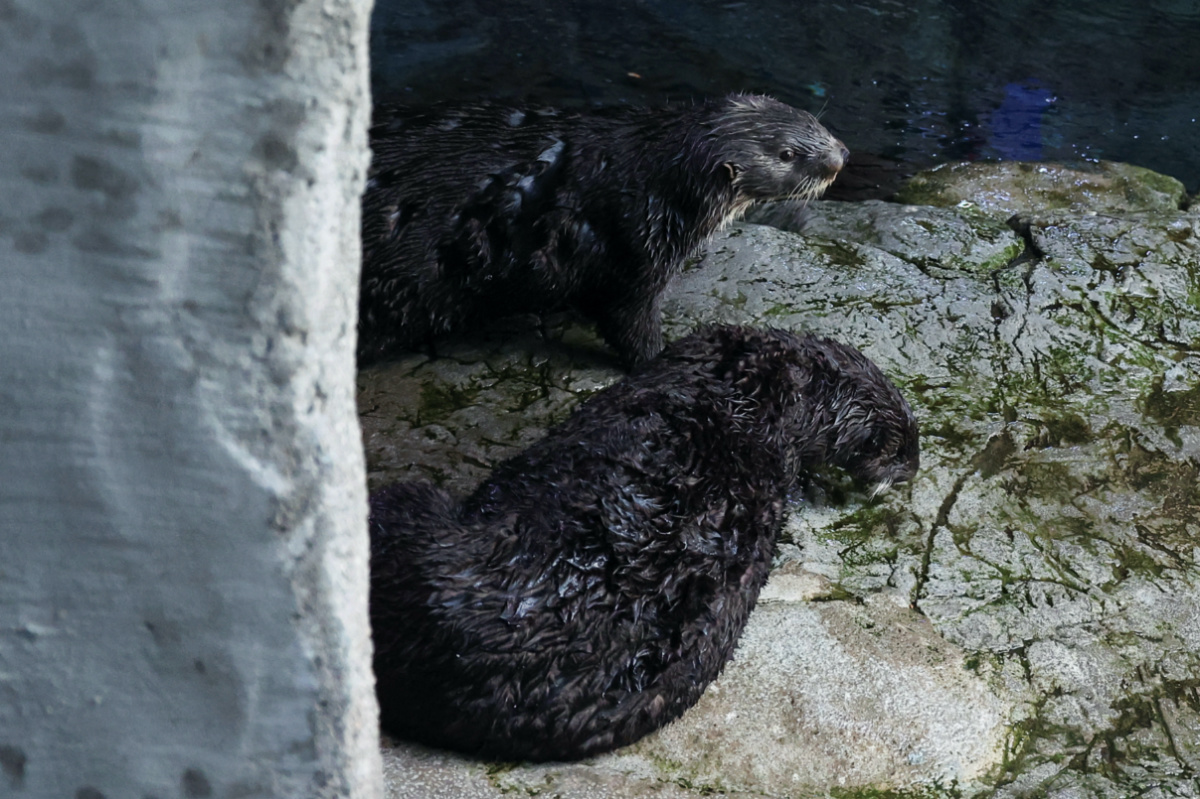
ROLLO ROSS and JACK FERRY, of Reuters, report from Long Beach…
Long Beach, California
Reuters
Every year, around 10 to 15 sea otter pups are found stranded off the California coast, often due to storms that separate mother and offspring.
The Aquarium of the Pacific in Long Beach is partnering with the Monterey Bay Aquarium to pair pups with surrogate sea otter mothers with the hope of teaching them life skills and returning them to the wild.

A sea otter stands as another sea otter emerges from water, at the Aquarium of the Pacific, in Long Beach, California, US, on 11th April, 2024. PICTURE: Reuters/Mario Anzuoni
As part of the program, the aquarium has successfully bonded their first surrogate mom, called Ellie, and a currently unnamed pup.
“That mom is going to teach them all of the behaviors that we cannot teach, being people.”
– Megan Smylie, the sea otter program manager at the Aquarium of the Pacific.
“That mom is going to teach them all of the behaviors that we cannot teach, being people,” said Megan Smylie, the sea otter program manager at the Aquarium of the Pacific.
“That adult female will start to mimic behaviors that the pup should learn, will help it groom, will help it forage, will help it teach prey manipulation, how to open up shells and anything that they would need to know that humans are unable to teach them,” Smylie added.
California sea otters are a protected species. After being relentlessly hunted for their unique fur – they have the densest hair of any animal with up to a million hairs per 6.45 square centimetres – they were thought to be extinct until a colony of 50 was found off the coast of Big Sur in the 1930s.

A sea otter looks on, while in water, at the Aquarium of the Pacific, in Long Beach, California, US, on 11th April, 2024. PICTURE: Reuters/Mario Anzuoni
Now, the numbers are up to around 3,000 but more are needed not only for the species’ survival but also to protect California’s near-shore ecosystems.
“They are a critical sort of predator in that system that keeps herbivores like sea urchins in check so that sea urchins don’t overpopulate and take out kelp forests and eel grass beds, as an example,” said Brett Long, a senior director at the Aquarium of the Pacific.
The sea grass and kelp ecosystems are credited with creating biodiversity, protecting against climate events and are a powerful tool in carbon sequestration, Smylie said.
Sea otters may be super cute and cuddly, but Long also says they are very territorial and are “just a wolverine in the water.”
We rely on our readers to fund Sight's work - become a financial supporter today!
For more information, head to our Subscriber's page.
And their eating habits are pricey, as they consume 25 percent of their bodyweight every day in restaurant-quality seafood. So a 20 kilogram otter eats 4.5 to 5.4 kilograms of seafood a day.
That means that feeding an otter costs the aquarium $US40,000 a year and demands constant fundraising.

A view of sea otters at the Aquarium of the Pacific, in Long Beach, California, US, on 11th April, 2024. PICTURE: Reuters/Mario Anzuoni
The two aquariums have rescued eight stranded pups and hope other organisations can join the effort to increase the population in the wild and protect the California shore ecosystem.
“This is a bigger purpose,” said Long. “This is a higher challenge. So we invest and we invest a lot but we’ve all now learned and appreciate, boy, you see that juvenile otter survive out in the wild. That feels incredible.”




